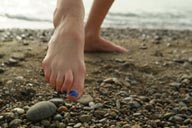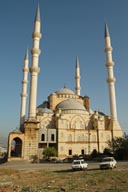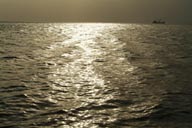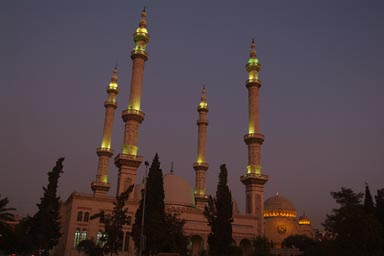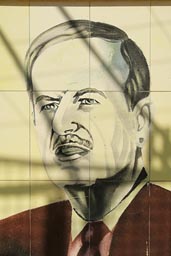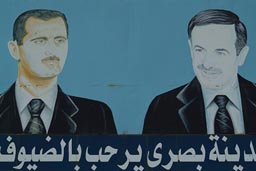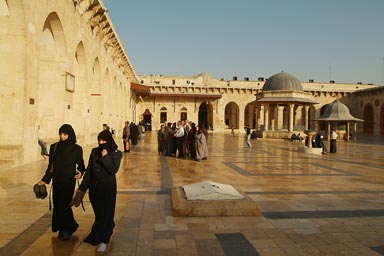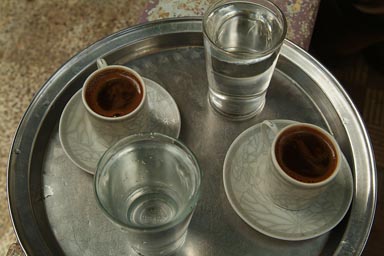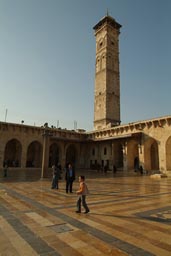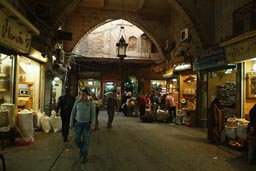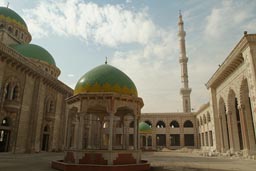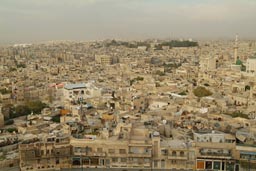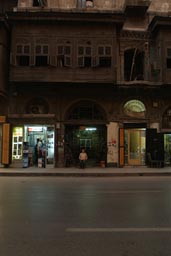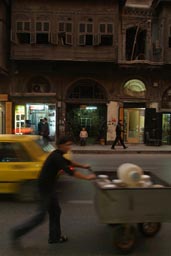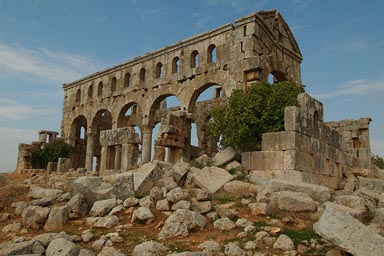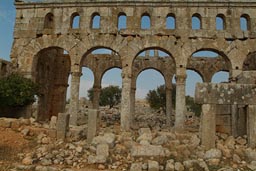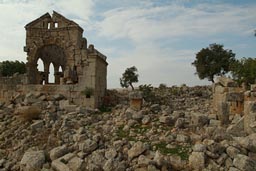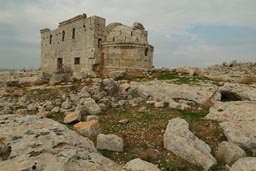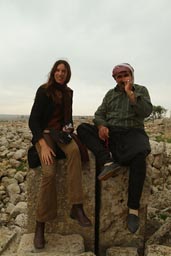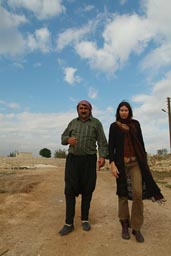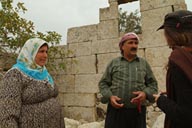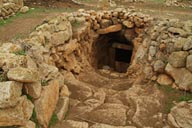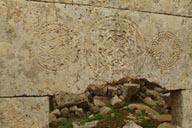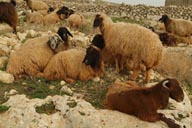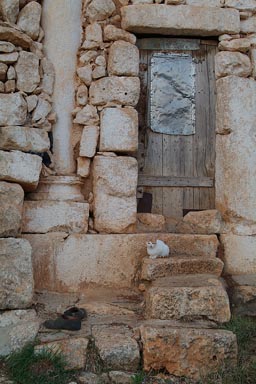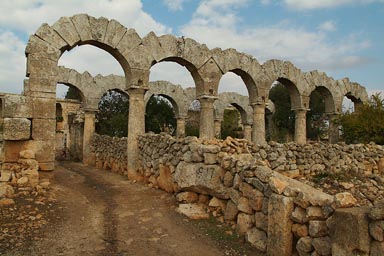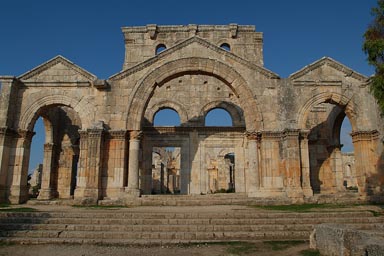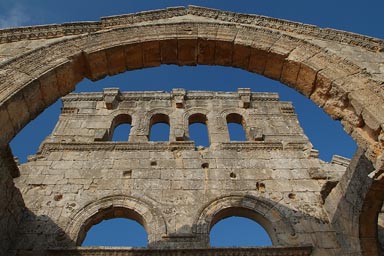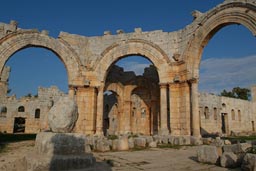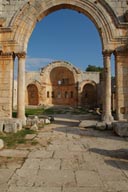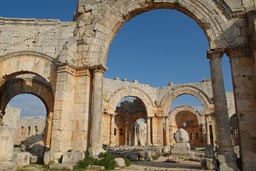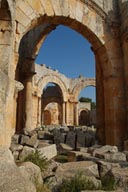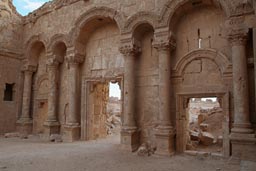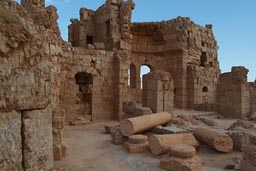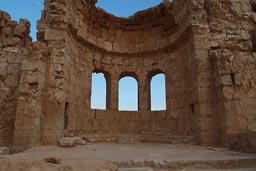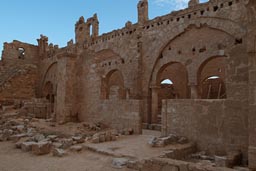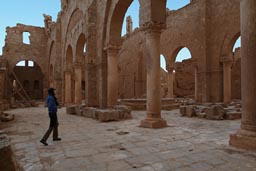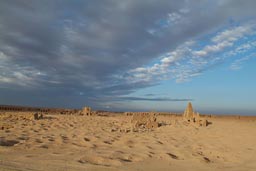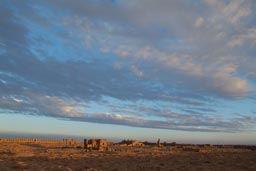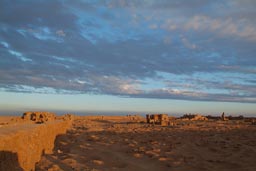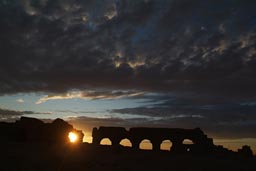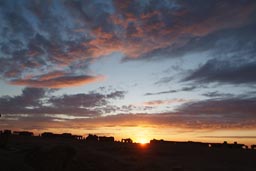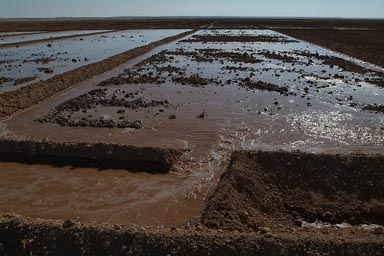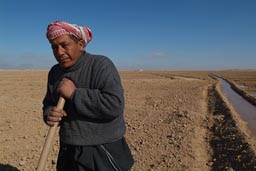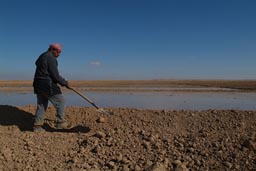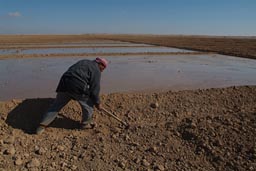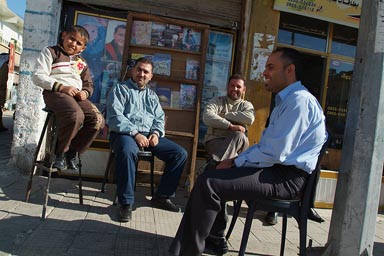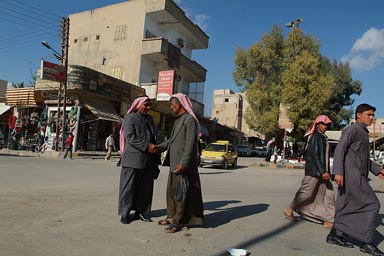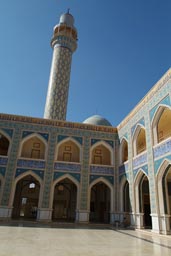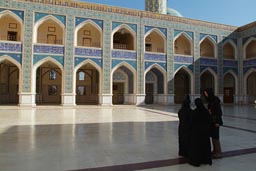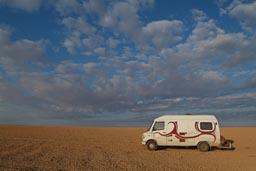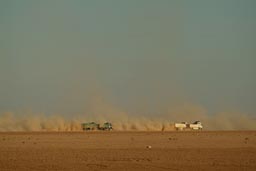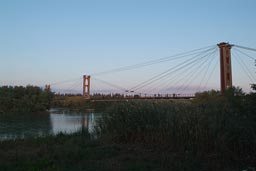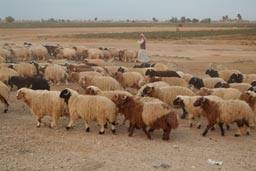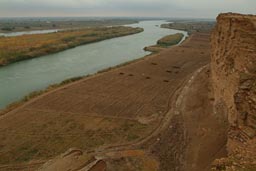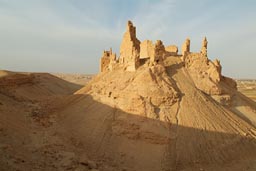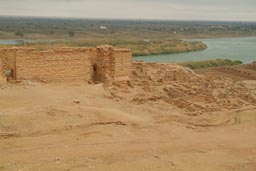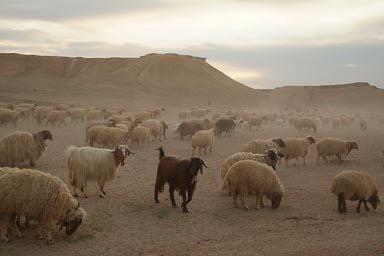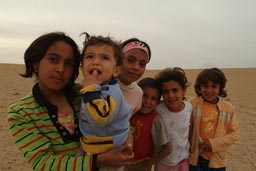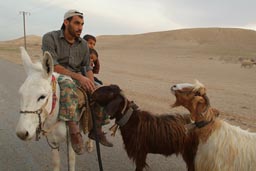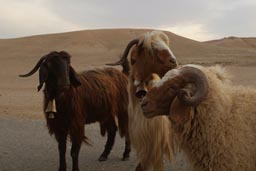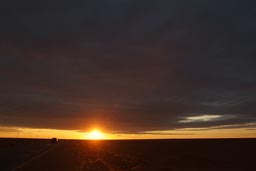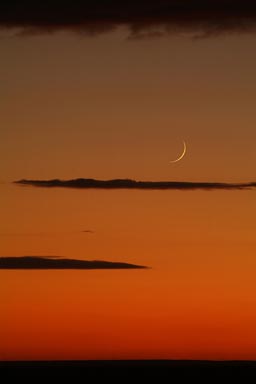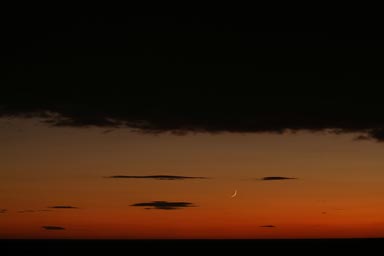www.thisfabtrek.com > journey > asia > syria > 20091116-deir-az-zor
Out of Turkey.
Download GPS (KML) track/waypoints.
The fab journey takes us further south. This is the 7th of November 2009. From Gaziantep via Karamanmaras, city on a mountain with a huge newly constructed mosque right on top with rocket style minarets reaching high into the skies, to Osmaniye and further to Iskenderun on the Ag Deniz, Mediterranean coast, Hatay (wiki), the last province Atatürk unified into Turkey, wrestled it from Arab control just before his death 1938. The Syrians till today consider the province Hatay their own, call it Liwa' aliskenderun.
Atatürk on the statue here looks much older, wiser, gone is the military theme of formerly erected statues, the statesman is followed by civilians, what seems a family, a mine worker, an architect.
We drive south the windy stony coast along cliffs and high mountains that rise to 1800m, the Nur Dağlari, mandarins are being brought in, the olive trees have been harvested earlier, it is a Sunday and everywhere along the coastal dirt road Turks take their families to the barbeque on a windy beach. Out on the ocean there is a fish cutter that fights against the wind and the waves, while the low standing autumn sun in the West wraps the water in glittery tan.
Land inwards to Antakya which in ancient times was called Antioch, a city of 150,000 by 500 AD., here is the rock chapel of St. Peter, one of the oldest churches in the world, Christianity spread from here first they say. On important ancient trade routes we cross into a new country, into Syria (wiki), and even between the borders ancient stones remind the traveler of the long history. This is biblical country, the cradle of faith as the Syrians say, and the history goes back a lot further, some 10,000 years, today’s Syria is in the center of what was the fertile crescent, one of the cradles of civilization, where humans left paradise behind them, abandoned their nomadic hunter gatherer life to settle for hard work and plough the land and raise/domesticate animals.
Aleppo/Halep/Halab.
Aleppo (wiki) is huge, 5 million, busy, multi dimensional, culturally diverse; church bells ring through the noise of honking traffic, the muezzin’s calls only minutes later creating a special mélange. In Syria religions have learned to live side by side for centuries; Christians, Jews and Muslims (who make up ca. 70%). The Christian population swell and was integrated following the Turkish Armenian’s exodus following 1915. But most Jews have left since 1948 and the creation of Israel.
Obviously the calmness has to do with the albeit tolerant but steady and iron steering of the country, its sometimes cruel repressions by the father and son Hafez (wiki) and Basher (wiki) al-Assad’s. And the Christians in Syria are said to consider this, officially secular, Ba'ath (wiki) regime as a guarantor for their continuing well-being.
But I remember the repetitive GW drum that Syria is part of the old axes of evil, which was meant to make us shudder, brain wash us. The country should have fared better; its isolation throughout the years has been unnecessary and unjustified. But what can you do when the Golan (wiki) was taken away from you? Say it does not matter?
Movement throughout the country is hassle free with hardly any checkpoints; unlike 22 years ago, my last visit. Syria also seems crime free and enormously friendly, my first impressions in Aleppo point to an open and tolerant, in some ways though polarized society.
I see these groups of 10 and more black completely covered women huddle through bright lit shopping streets; some say this is the Shia Islam orientation that requires women to cover completely, black from head to toe, but why black, because of the ongoing deep sorrow and mourning of Shia Muslims for the murders of Ali and his son Hussein some 1300 years ago, that provoked the early schism in Islam?
But then another day where we have lunch in some outdoor café, a group of 15 or so young women with their headscarves mix with others that show their hair, most smoke the Nargile, some cigarettes, they order juices or lunch. There is this other table, a group of elderly women, like obligatory a chewing gum and a cigarette after lunch, a last sip of water out of the bottle before they go. Just is scurrile to me. The fact that they all constantly work their mobile phones must not be mentioned. Also men meet women, scarves and no scarves, boyfriends meet girlfriends, a couple meets another couple. Elsewhere, at night we go a block further suddenly you realize mostly western attire, oh now we have entered a Christian quarter.
But it is obviously the all-blacks Ninja culture, as a Muslim friend, a Sunni has called it, is what we don’t grasp as Westerners; that even the young and beautiful wear all black, cover face to toe. So is it part of the Shia mysticism? Christina though has a nice experience walking past a women covered all black; to her great surprise the girl lifts her cover and unveils her beautiful face and smiles gracefully to Christina, looks her in the eyes for a second as if to say welcome and I am not like what you think.
A comment on men; many wear the Keffiyeh, the Palestinian style "Arafat" cloth. Many of those who don’t surprise with very blond or reddish hair and scrutinizing their faces you realize freckles; where does this come from, did the crusaders leave their genotypes?
On every corner people ask whether they could help with directions, a nice true conversation spans quickly and never ends as many people here have a command of English, some of French. Where we eat, where I buy a can of beer (not found a bar yet that serves beer), or where we buy freshly ground coffee. Syria as opposed to Turkey has a coffee culture, Turkey just has the coffee name imprinted in western minds, but really you can just buy Nescafe in Turkey and everyone drinks black tea, as many as can per day. But here in Syria, coffee is just all over, made the "Turkish way", or through an espresso machine, a special taste is given by adding 10% of Cardamom into the mix, what a delicious smell that gives. Now when I cook coffee in mornings the whole street wakes to it.
Aleppo encompasses, we like our first taste of Levantine food; a Falafel or two a day. It is Aleppo’s feel and touch, the stroll around the old city, a UNESCO heritage site, the interaction with the pomegranate juice seller after dark, somewhere. The souk is the suq is the suk, the Great Umayyad Mosque a magnificent holy place, even for non Muslims, the citadel impresses with its walls outside. Not so inside, the place was used, taken and retaken and rebuilt over and over over the centuries, now just a field of reconstructed unexcavated Disney rubble and it cannot inspire. We love Aleppo, would like to stay, live here but leave for a tour to the lost cities around.
ABRAHAMIC MILK
by Christina
Cream colored ashlars adorn these ancient city streets,
sidewalks of silk and perfumed linens fill the horizon
seekers of gold or prayer beads,
all find what they need
even a Mosque and church straddle one another
And atheists are invited in for tea.
A city of gentlemen, and refinement.
From Alexander to Flaubert. Who has not come here?
In these crowded streets, strangers glance,
eyes dialogue, and passions collide.
a darting heart that fears,
is drowned by the Grand Mosques
bosom of receptive serenity.
Here a father still rules.
Fried felafel fills the air,
pita with hummus to go,
no one feels the hunger.
The honey coated baklava,
handed to me for free,
ahlan wasahlan....welcome to our city.
This is Aleppo.
Lost cities of early Christianity. Saint Simion Stylites, Kharab Shams.
The little tour takes us to Kharab Shams first, it is just there; we discover it by coincidence, a field of huge stone blocks, Roman, what period? Some arches, some caves; cellars for wine, holes in the ground; cisterns? A cathedral, some more churches, what was life here then? Were the grounds more fertile then now? Is such a stony affair all around, the land looks forsaken; God forsaken? But these towns must have seen their high times. Located on the trade routes, Christianity spread through here.
In another place, Kafar Nabo, Mahmud shows us round, a Kurd, he has sheep, goats, grows olives and pomegranates, is a very content man, head of a family of many, also his wife joins, reaches out, a tea invitation we can only refuse so many times, they happily show us all their photos of all the beautiful daughters and sons, who live, study or are married elsewhere.
And then there is Saint Simeon Stylites (wiki) citadel, church, basilica, 470 AD., a vast expanse on a hill top, all erected in honor of Simeon, a monk and nut case preacher who had lived here. Built as a pilgrimage place it lasted only 50 years, was destroyed by an earthquake, a sign by the almighty. The citadel around is Byzantine.
Al-Rasafeh/Resafa/Sergiopolis and the desert.
Marbled desert city, with its prime period from 3c to 5c A.D. Roman and Byzantine in style. Located on the trade routes it linked Aleppo to Palmyra and further to Dura Europos on the Euphrates, but also on path of the Persian-Byzantine wars, so well defended with massive walls. There are huge underground cisterns enabling Al-Rasafeh to last for a long time without rain; it needs the rains as there is no spring or well. But why was it abandoned in the end after, all the effort? Too little water, desertification gave it the final boot?
While I wonder and wander about the rubble and am stunned by all the marble and the vastness of the terrain the sun and the clouds have their colorful play.
Irrigating the desert near Ar Raqqah.
On our way back to the main road, fields for cotton and cereals are being laid out, irrigation channels are being dug. We are near the Euphrates and this seems to work well for the desert left and right of the big stream. The ditches and walls are being dug and re dug every year and maintained throughout the season. Not for too many years though, the terrain is being abandoned so often for several years for the ground and soil to rest and recuperate.
We descend for a superb simple Homos lunch on Ar-Raqqah. It is a men’s world out here, a friendly one though. Ar-Raqqah has a lightening white and blue Iranian mosque; honorably we are admitted and shown round the three holy tombs. Women and men pray together at these hours. Two women take Christina on a special introductory tour. Shia Muslims here pray by pressing the forehead onto a stone that they put in front of them on the ground.
We go north then, near Qantari on the road east is a truck stop, I enter to get some coke or sugar drink, and am surprised to find Turkish Efes readily available, and more surprised to see women of Eastern European origin drinking. Hmm. "Come here, stay here". Hmmm, better not. I buy the beer however.
Desert night camp not far from Tall Tamir, but the desert looks ploughed, the fields lay lea. Unimaginable something grows here.
Next day is Sunday. Al-Hasakah means another Homos lunch. Al Hasakah is known for Iraqi refugee camps. But a different community attracts our attention. The Armenian 1917 Diaspora one; Sunday’s churches are full. I did not expect out here to see such a divers and openly tolerant community of Muslims and Christians.
Deir ez-Zor/Dayr az–Zawr and south the Euphrates River.
Deir az-Zor (wiki) for me means one full circle, this time I come from the other side, from the East. I sat here on the Al-Furat (Euphrates) River drinking beer 22 years ago. The green stream with its reed under the suspension bridge has hardly changed, the city has. Light crude oil discovery in the desert has changed things, made it become a modern town.
Then I worked for an American oil service company on oil rig completion and casing jobs and pipelines in the desert, work at day, at night, in cruel sun, in sand storms, with 15 or so roustabouts, oh what a hero I was. But I enjoyed the sitting under the truck, sheltering from sun, cooking tee experience, when the Bedouin helper came with a shotgun to work. I also knew how to drive a big truck and operate a crane and being a stepper acrobat on top of the rig. Well maybe it all comes from then there, here in Syria.
Today is just for the memories; I immediately find a restaurant on the stream that serves beer and Levantine food of the finest, just like in my memories.
I always wanted to venture south the Euphrates towards the Iraqi border. This is ancient land and it has not changed so much since the beginning of times. Abraham, father of the three religions allegedly was born on the Euphrates, in Ur much further south in Iraq and he is said to have wandered the Fertile Crescent up the Euphrates to modern day Turkey and Aleppo, then south to Canaan. So maybe he has come through here.
The stark thing is that cultivation is really only possible inside the valley, within a few kilometers left and right of the stream, sometimes only a few hundred meters. A step onto the plateau opens up the cruel Arabian Desert. This is where the Bedouins live, herd their sheep and goats at the fringes of the desert, like since ever.
Also on the edge of the desert plateau are all the castles and cities and mosques, today all ruins, from Greek/Roman/Byzantine times and later. They sit on top as the river below was untamed and due to regular flooding, also the tops had natural strategic advantages.
This is where it all started. Mari (wiki) for example had been inhabited since 5000 B.C., golden time 2900 to 1750 B.C., vanished once the Greek came through 300 B.C. The excavated mud "palaces" that lay under the sand for thousands of years are now subjected to wind and rain (yes it rains as we get there). Mud has this property to go back into the sand.
Later sites are obviously more impressive, especially Dura Europos (wiki), Greek later Roman, built on the top of the cliffs overlooking the Euphrates River valley.
And in between we meet the Bedouins and the children. We set up night camp not far from them in the desert, near their goats and sheep that are being amassed for Eid el-Khebir. The odor of the animals is omnipresent; also scores of flies have entered the van. The shepherd’s dogs roam and bark, come nearer at times, better not go out and pee then. The night sees thunderbolt and lightening, heavy rain starts and never ends. How do the Bedouins fare in their tents?
Road to Palmyra.
So much rain, entire town sections are flooded in Deir az-Zor, the skies have let it all out for days. But all is over at one stage. The thick bank of clouds is still hanging over us, but rolling west, the clear shimmer on the horizon becomes more. Soon the sun will be visible just underneath. This is what brings out the most bizarre colors.
But the best is when the new moon, one day old, sets not much after sun. New moon behavior is usually like that. But not always is the sky orange. When the moon gets older, by two or three days it sets later and the skies are usually dark when it sets. Catching the new new-moon is important.
Palmyra is Palmyra, a wonder, turn the page.
www.thisfabtrek.com > journey > asia > syria > 20091116-deir-az-zor

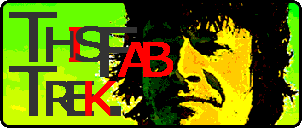


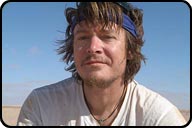
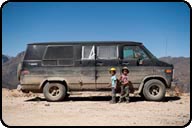


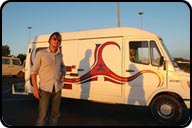
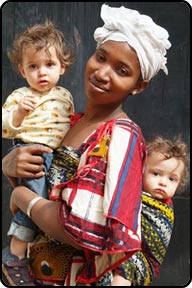
 contains Festival/Fiesta/Art photography.
contains Festival/Fiesta/Art photography.
